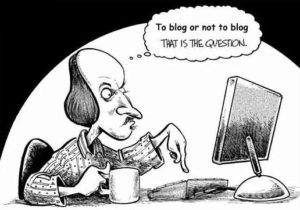As part of Anseo.net’s competition to win a HD Flip Cam, participants answered some questions about the Web 2.0 tools that they use in school and at home. In this article, we’ll examine the results and explore some of the reasons behind the results. It’s worth pointing out that the people who probably took the survey are IT literate and probably have some form of interest in ICT in education.
There were 152 responses to the survey which asked the following questions:
- Which of the following web tools do you use at home?
- YouTube
- Google Apps
- A Blog
- Which of the following web tools do you use in school? (with the same responses)

For each item that was selected, a point was given. Therefore if I answered the first question, selecting two items, my “school use score” was two. Likewise if I selected 3 items in the second question, my “home use score” would be three.
The first interesting thing to note was that the total score for home and school use was:
471 for home use and 241 for school use
Using web 2.0 tools was almost twice as likely to happen at home than at school. While, this is unsurprising to most teachers, it does support the commonly held view that children are “switched on” outside of school but are forced to “switch off” once they come to school.  Having said this, 44% of teachers surveyed said they use YouTube videos in school, with 42.5% using Google Apps and 42% using a blog. Comparing these to home, 90% use YouTube, 48% use Google Apps and 42% using a blog.
Having said this, 44% of teachers surveyed said they use YouTube videos in school, with 42.5% using Google Apps and 42% using a blog. Comparing these to home, 90% use YouTube, 48% use Google Apps and 42% using a blog.
Some teachers pointed out that they would use YouTube in their school if it were not for their school’s web filtering policies. Thankfully, the NCTE has relaxed their rules on YouTube and other tools but many schools have not changed their level of filtering.
 The biggest disparity in the survey was the number of teachers using Facebook for school use against home use. 84% of teachers surveyed use Facebook for home use but only 14% use it for school use. To be honest, 14% was a higher figure than I expected. There are a number of issues around the use of Facebook with students for school use – such as loss of control and, lack of privacy and lack of security. There is also the perception of the line between work and personal life. Coupled that with the fact that the secure version of Facebook does not work on the NCTE School’s Broadband filtering, there are some issues with security in general.
The biggest disparity in the survey was the number of teachers using Facebook for school use against home use. 84% of teachers surveyed use Facebook for home use but only 14% use it for school use. To be honest, 14% was a higher figure than I expected. There are a number of issues around the use of Facebook with students for school use – such as loss of control and, lack of privacy and lack of security. There is also the perception of the line between work and personal life. Coupled that with the fact that the secure version of Facebook does not work on the NCTE School’s Broadband filtering, there are some issues with security in general.

It was heartening to see that blogging has grown in popularity with teachers since I last surveyed them two and a half years ago. Back then, only 20% of teachers said that they would even feel comfortable using a blog, (I can assume that much less than that used a blog at the time). With over 42% of respondents using blogs in school and at home, this is a major leap.
Twitter is all the rage amongst a wide variety of generations. I was speaking to a second level teacher who said that her 13-14 year old students are obsessed with it yet the older teenagers prefer Facebook. Twitter is being used by all sorts of celebrities, salesmen and educators. For the first time, one can have conversations with people one would never have access to.  There is the famous example of the rugby fan who was demonised after tweeting a rugby international. However, it’s not just celebrities. I can contact teachers all over the world with a tweet. Twitter is beginning to be used by teachers thanks to initiatives like Edchatie and various projects run by individual teachers, e.g. @mrquinnsclass and @superkiddos. The figure of 15% of respondents using it for school was higher than I expected. Having said this, Twitter usage at home was over 3 times more likely.
There is the famous example of the rugby fan who was demonised after tweeting a rugby international. However, it’s not just celebrities. I can contact teachers all over the world with a tweet. Twitter is beginning to be used by teachers thanks to initiatives like Edchatie and various projects run by individual teachers, e.g. @mrquinnsclass and @superkiddos. The figure of 15% of respondents using it for school was higher than I expected. Having said this, Twitter usage at home was over 3 times more likely.
Finally, it was good to see that the use of Google Apps was reasonably similar with around 42-45% of teachers using the service both at home and in school. With Google adding more and more features to its products, it may not be long before more teachers jump on board.
Overall, one could look at this survey in two ways. In a positive way, it’s good to see that teachers seem to be using web 2.0 services and that the figure is growing. Certain services like Facebook and Twitter might need more time to be trusted by teachers and we will explore these over time. Another way of looking at the survey is that there are over 30,000 teachers in the country and less than 1% of them took the survey. The teachers who did take the survey are more likely to be teachers with a positive disposition to technology. It is quite obvious that 15% of teachers (4,500) are not using Twitter in school. However, rather than being pessimistic about this, at least we have a start. Web 2.0 usage is on the increase in schools. The word “blog” is generally not met with a puzzled look and there is colloquial evidence that many more teachers are using technology in some way in their classroom, be it printing online posters or showing shapes on an Interactive Whiteboard. Over time, we’ll convert more to technology. After all, as Jesus said: “The geek shall inherit the earth”…or something along those lines.

